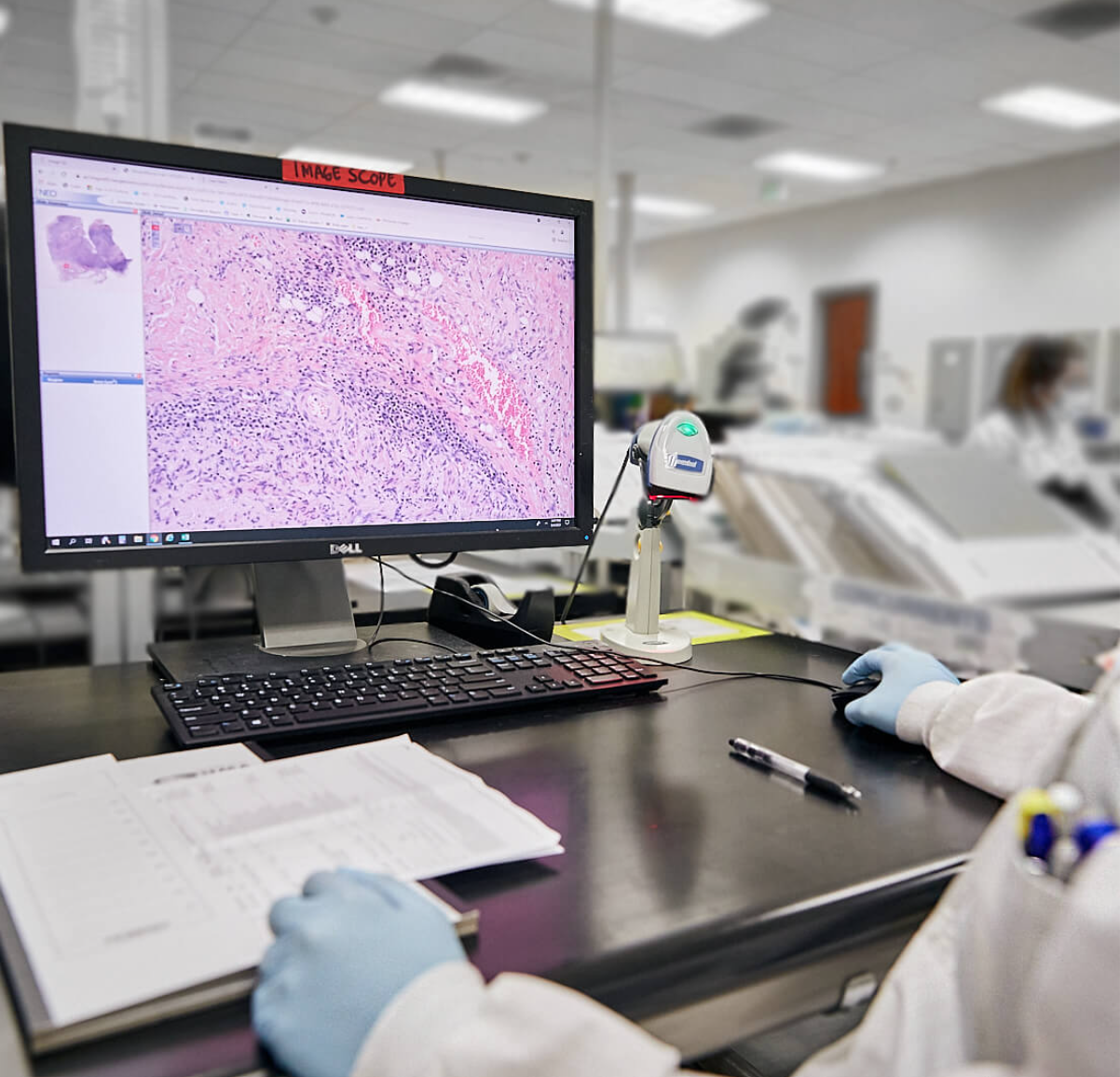Explore the wonders of genetics as we unravel the blueprint of life, and discover the leaders at the forefront of the latest genetic breakthroughs.

Ever been told that you’re one in a million? Sure, it’s a cheesy compliment, but it’s also an accurate reflection of our genetic diversity as a human species. And yet, did you know that our uniqueness only accounts for 0.1% of our entire genetic makeup? This means that you’re actually 99.9% identical to every other person on the planet[1]! It may seem insignificant, but the 0.1% difference still accounts for millions of biochemical individuality, dictating just about every trait from hair colour to health risks, and even right down to our circadian rhythms[2].
That said, join us as we zoom in to the fascinating world of genes—what they are, how they’re studied, and their implications in our lives.
So what exactly are these genes that make us fundamentally similar yet different all at once? Before we go on, here’s a short glossary of genetic terms that will be covered in this article, just to help you along.
Chromosome: A long thread-like structure in which DNA is tightly packed within the nucleus of a cell, allowing DNA to be copied accurately during cell division
DNA: Deoxyribonucleic acid; a complex molecule in a double helix structure that carries genetic information for the development and functioning of an organism, consisting of four bases—adenine (A), cytosine (C), guanine (G), thymine (T)
DNA sequencing: Determining the order of bases in a specific DNA segment for a range of purposes, including disease treatment and human identification
Genome: An organism’s complete set of genetic material, including instructions that allow for its formation and development
RNA: Ribonucleic acid; a single-stranded molecule whose main role is to be the intermediate of genetic information
mRNA: Messenger ribonucleic acid; a type of RNA that carries coding sequences or transcripts to make protein
Based on the central dogma of molecular biology, genetic information can only flow in one direction, from DNA, to RNA, to protein, or from RNA to protein
If cells are the building blocks of life, think of genes as the blueprints. Genes are made from the intricately woven DNA that resides within every cell of the body, providing instructions for the synthesis of proteins such as enzymes and antibodies to carry out their assigned functions in the cell.
These proteins are also responsible for a significant portion of our traits as unique individuals. Our DNA and genes are stored in chromosomes, of which humans typically have 23 pairs, passed on from both parents. Along with physical characteristics, diseases can also be passed through family lines.
That’s where the field of genetics (the study of genes and heredity) comes in, to promote better medical technologies and increase early disease prevention, among other societal applications like solving crimes and producing climate-resistant crops.
Food for thought: Only about 1% of DNA is made up of protein-coding genes. What do you think the remaining 99% of our DNA with noncoding genes do?

Did you know that the Helix bridge that sits above the Singapore River is the first of its kind, inspired by none other than the DNA’s double helix.
As you might’ve guessed, genetics has vast applications in the life sciences spanning from biochemistry to palaeontology, providing invaluable insight to the evolution of life. For instance, a growing number of studies have suggested that the non-coding genes that make up 99% of our DNA, what scientists used to write off as ‘junk genes’, may play a more important role in our survival than we know[3]. On a broader level, advancing technology has allowed scientists to study whole human genomes, the interactions among genes, and how they’re affected by the environment—collectively known as genomics—making it increasingly possible for us to alter the course of our lives.
In the wake of the Covid-19 pandemic for instance, most of us in Singapore, having gotten one or more doses of the Pfizer or Moderna mRNA vaccines, would’ve benefited from revolutionary genomic technology. While some initially mistook the vaccine to be a form of gene editing, causing widespread hostility towards its reliability, we now know that mRNA vaccines are safer, more efficacious, and quicker to produce than their traditional counterparts, and have transformed viral disease vaccination for the world.
Since genomics as we know it is still a budding field, it’s exciting to bear witness to its blossoming around the world, and Singapore is no exception. Here, we shift our sights to two Singapore Science Park tenants that are nose deep in genetic research for the betterment of our lives.
Located at Teletech Park is PacBio, a beacon of light in the genomics landscape. Their mission is a bold one: to be a key partner in life science exploration, harnessing the power of genomics to improve human health. This vision is built upon a foundation of empowering human, microbial, plant and animal, and cancer genomics, by providing complete and accurate views of genomes through a transformative portfolio of sequencers and technologies.
Through gold standard research and development, PacBio continues to strengthen their arsenal, most notably with two newest additions—both a long-read and a short-read sequencing system. The first, the Revio, is an ace tool in large-scale genomics research, able to read more than three human genomes (that’s about nine billion base pairs[4]) a day. The latter, the Onso, is the company’s first short-read sequencing system, designed to be a bench-top solution with more flexible and timely processing powers. These innovations, along with many others, allow the sequencing superstars to provide dynamic genomic solutions for a wide range of industrial partners.
%20%20Focus%20MediaCiti%201920x1080%20%20(1).jpg)
PacBio’s short-read (left) and long-read (right) systems are built with remarkable computing capacities to support groundbreaking research. Image courtesy of PacBio.
When our genes fail to perform as they should, such as from genetic mutations, they can lead to physical defects or terrible health conditions like cancer. Hence, a large part of genetic science is dedicated to promoting health and preventing
disease.
US-based company, NeoGenomics, stands out as a frontrunner in that regard, specialising in advanced precision oncology throughout diagnostic, prognostic, and predictive processes, to eliminate the challenges of cancer patients, even opening a pharmaceutical services laboratory at The Galen to support regional oncological trials.
NeoGenomics is geared with a comprehensive menu of more than 500 diagnostic tests to equip healthcare providers with the best tools. Not only that, the company takes action to enhance the care of cancer patients too. For instance, NeoGenomics is the proud developer of the first and only Early-stage Non-small Cell Lung Cancer (NSCLC) Panel that detects genomic alterations and gene expression in key biomarkers (biological evidence of tumour in the body) to provide oncologists with important information needed to curate personalised treatment —a huge step to improving patient outcomes from the very beginning of their cancer journey.

NeoGenomics leverages cutting-edge technology and machine learning capabilities to boost the efficiency and accuracy of disease testing. Image courtesy of NeoGenomics.
With genetics, it seems that we’re always on the cusp of innovation anywhere from fertility to disease treatment; there’s just so much left to discover and create! Whatever comes next, we look forward to embracing new understanding and
adaptation for life on Earth, especially by the good work that our tenants at Singapore Science Park are doing.
And there you have it, the dynamic field of genetics. It continues to baffle us how something so utterly minuscule can shape our lives, even more so now that we’re capable of tweaking our fates for good. Well, we hope you learnt a thing or two from our deep dive into this field and the great minds behind it.
_________________________________________________________________________________________________________________
Follow us on Facebook @SingaporeSciencePark and Instagram @yourWorkplaceCommunity, or even subscribe to our newsletter - your Workplace Community to receive latest updates on our tenant engagement activities.